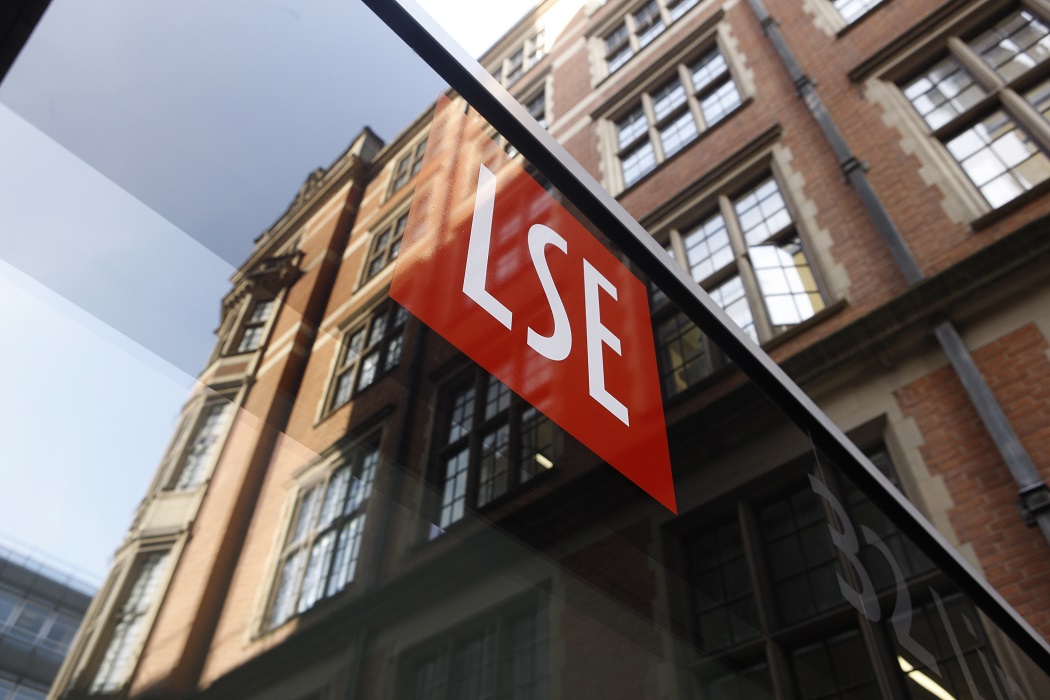 India’s post-Independence history has been punctuated with incidents of mass violence but very few of the perpetrators have been brought to justice. Surabhi Chopra argues that these continuing failures of justice are a result of incomplete and inaccurate logging of the cases, witness intimidation and a lack of government commitment to seeing prosecutions through.
India’s post-Independence history has been punctuated with incidents of mass violence but very few of the perpetrators have been brought to justice. Surabhi Chopra argues that these continuing failures of justice are a result of incomplete and inaccurate logging of the cases, witness intimidation and a lack of government commitment to seeing prosecutions through.

Last year, when Narendra Modi was running for national office, he was asked surprisingly few questions about the deaths of over a thousand Muslims in Gujarat twelve years earlier. Clearly, Mr Modi had managed to successfully distance himself from the mass violence that unfolded in his home state in 2002, during his tenure as Chief Minister. However, human rights groups have documented that this violence was supported, organised and led by members of the Bharatiya Janata Party, as well as closely affiliated Hindu nationalist organisations including the Rashtriya Swayamsevak Sangh, Bajrang Dal and Vishwa Hindu Parishad, with the acquiescence, if not active support, of the Gujarat government. Years later, only a tiny proportion of those involved have been brought to justice. Similar impunity has been enjoyed by members of the Indian National Congress who participated in mass violence against Sikhs after prime minister Indira Gandhi was assassinated on 30 October 1984. Even today, some criminal proceedings related to violence in 2002 and 1984 splutter on, with victims recounting what they suffered and witnesses reporting what they saw, even though the results of similar proceedings suggest that perpetrators are unlikely to be found guilty.

How does this happen? To fathom these continuing failures of justice, a recent book delved into the official records generated after four of the worst episodes of mass violence in independent India. On Their Watch: Mass violence and State apathy in India (Chopra & Jha eds., Three Essays Collective 2014) examines the state’s response after mass sectarian violence in Nellie, Assam in 1983, Delhi in 1984, Bhagalpur, Bihar in 1989 and Gujarat in 2002. The authors, including myself, filed over 800 applications under India’s right to information law to secure official records on, inter alia, criminal justice following these episodes of targeted, systematic violence that killed and injured hundreds of people and displaced thousands from their homes.
Why criminal prosecution fails
We tried to track official decisions from the point when a person first approached the police, through investigation, trial, and ultimately, appeals against trial verdicts. First information reports (FIRs), which record initial complaints about crimes, were available for all four episodes of mass violence, and so were charge-sheets, which record the offences for which the state is putting suspects on trial. Records after trials begin – applications by the prosecution to charge the accused person with additional offences, for example, or applications for bail by the defence or appeals against the verdict at trial – were very difficult to access, except in Gujarat.

Even without complete trial records, the pre-trial records we secured were revealing. Across all four episodes of mass violence, we found that the police had registered flawed FIRs. The names of attackers, along with other identifying details, were erased. Details of violence – people killed, limbs hacked, houses burnt, belongings looted – might be recorded, but perpetrators were identified simply as ‘persons’ or ‘mob’. FIRs recorded after the Nellie massacre did not even specify what happened to individual complainants. Instead, these documents had identical pro-forma text, individuated only in listing possessions lost by the complainant. Clearly, these FIRs were never meant to be anything other than paperwork for whatever financial aid the government might disburse. Some FIRs – particularly after violence in Delhi and Gujarat – yoked together multiple disparate incidents. For example, attacks in different villages by different people would be included in the same ‘omnibus’ report, confusing any investigation that might follow.
Civil society research indicates that victims often named their attackers when complaining to the police. Many participants in mob attacks belonged to political parties, and some were prominent figures, locally if not regionally or nationally. Furthermore, many bystanders witnessed and many journalists recorded the very public violence of 1983, 1984, 1989 and 2002. Widespread erasure of perpetrators names from FIRs was, therefore, a systematic choice that the police made when they investigated these episodes of violence. Absent crucial details, FIRs provided a poor foundation for investigating the crimes they recorded, and an easy route to closing cases without gathering enough evidence to put anyone on trial.
It is not surprising, then, that a very high proportion of cases filed after mass violence are summarily closed, i.e. the state opts not to charge anyone with a crime and sets the case aside. We found that cases relating to mass violence in Delhi, Bhagalpur and Gujarat were summarily closed at rates ten times higher than the national rate for summary closure of offences in the year closest to each particular episode. Cases relating to the Nellie massacre were summarily closed at a rate eight times higher than the relevant national rate. Seventy percent of cases filed after mass violence in Bhagalpur were closed, as were fifty six percent of cases filed in Nellie, fifty percent in Gujarat and thirty seven percent in Delhi.

Thus, less than half the complaints filed after these episodes of mass violence led to criminal charges. And the cases that escaped summary closure were prosecuted very poorly by the state. Records from Gujarat showed that the prosecution applied for defendants to be custodialised rather than released on bail in only twenty percent of cases. By the same token, the state opposed fewer than six percent of bail applications by the defence.
This prosecutorial passivity matters a great deal. Defendants have a legal right to bail and should not lose their liberty unless releasing them jeopardises the criminal proceedings at hand. In mass violence trials, such jeopardy is manifest, but prosecutors and judges have chosen to ignore it. Defendants on bail are more likely to delay trials, applying for repeated adjournments, absenting themselves from court, and in a few cases, leaving the country. Protracted trials strain the resources and resolve of witnesses. When a trial takes years, the days of time and wages lost have proved prohibitive for many witnesses, as have threats and coercion by politically connected defendants. With scant witness-protection by the state, many trials collapse because witnesses ‘turn hostile’ to the prosecution case.
But witness intimidation was not the only stumbling block in mass violence trials. Rates of acquittal were so high as to suggest that the prosecution had been deliberately lackadaisical, and judges passive to the point of subverting fair, credible trials. The Assam government went the furthest in this regard. It withdrew all criminal cases relating to the Nellie massacre (and other violence during fraught elections in Assam in 1983) – even cases related to murder and grievous bodily harm – after a peace deal was signed in 1985 between the national government and leaders of the anti-foreigner movement in Assam. Samples of cases relating to mass violence in Delhi and Gujarat indicate an acquittal rate of over ninety percent – not quite as bad as the Assam government’s blanket amnesty, but far too close to it.
We received very little information on whether state governments appealed these acquittals. Our RTI applications about criminal appeals bounced from one public authority to another, suggesting that decision-making about appeals is chaotic and ad hoc. It is highly unlikely that governments are committed to appealing ‘not guilty’ verdicts, given the trail of diluted FIRs, summary closures, and shoddy, biased prosecution that leads to such a high proportion of defendants being acquitted.
 The research project that led to On Their Watch: Mass violence and State apathy in India was housed within the Centre for Equity Studies, guided by social activist Harsh Mander and supported by the International Development Research Centre. The research team included human rights lawyers Prita Jha, Anubha Rastogi and Suroor Mander, and RTI-specialist Rekha Koli.
The research project that led to On Their Watch: Mass violence and State apathy in India was housed within the Centre for Equity Studies, guided by social activist Harsh Mander and supported by the International Development Research Centre. The research team included human rights lawyers Prita Jha, Anubha Rastogi and Suroor Mander, and RTI-specialist Rekha Koli.
Note: This article gives the views of the author, and not the position of the South Asia @ LSE blog, nor of the London School of Economics. Please read our comments policy before posting.
About the Author
 Surabhi Chopra is an Assistant Professor at the Faculty of Law, Chinese University of Hong Kong. She researches transitional justice, national security and the rights of the poor. Surabhi did a Masters in Human Rights at the LSE in 2002-2003. She tweets @ProfChopra.
Surabhi Chopra is an Assistant Professor at the Faculty of Law, Chinese University of Hong Kong. She researches transitional justice, national security and the rights of the poor. Surabhi did a Masters in Human Rights at the LSE in 2002-2003. She tweets @ProfChopra.





